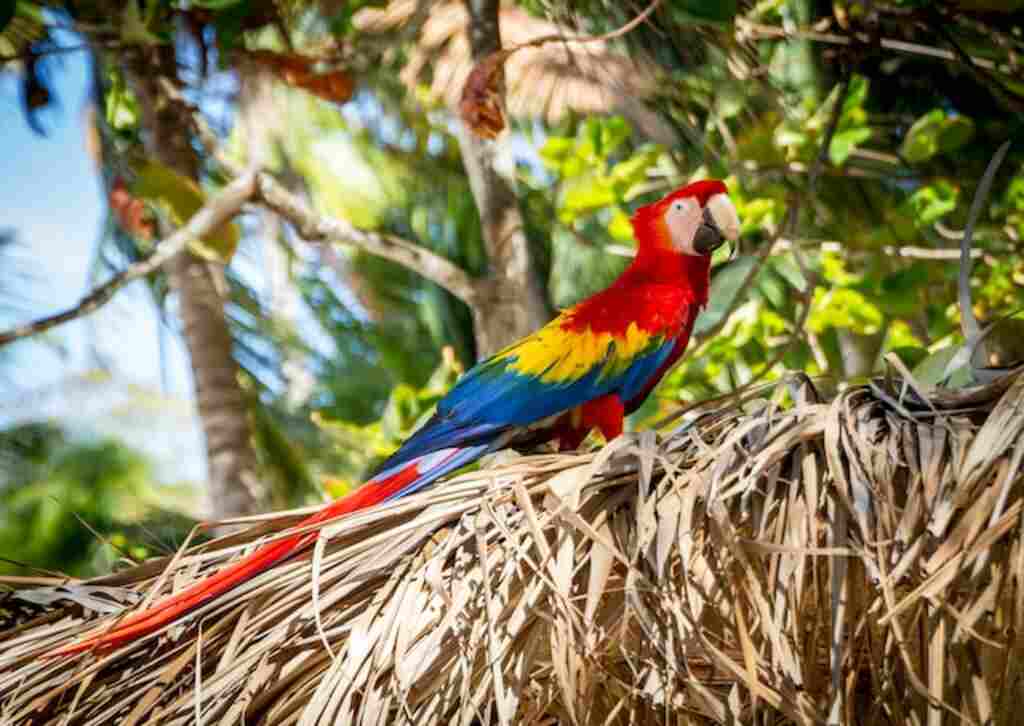Attention, devoted bird enthusiasts! Ever wondered, “How Many Different Species of Birds Live in Costa Rica?” Brace yourself for the astonishing answer. But hold on tight, because this captivating article takes you beyond numbers.
Explore the vibrant ecosystem, incredible adaptations, and why Costa Rica is a bird-watcher’s paradise. Get ready to spread your wings and embark on an exhilarating avian adventure! Short answer: Over 900 species!
Table of Contents
- 1 How Many Different Species of Birds Live in Costa Rica?
- 2 Costa Rica: A Birdwatcher’s Paradise
- 3 Overview of Bird Life
- 4 Total Number of Species
- 5 Birdwatching Hotspots
- 6 Top 10 Must-See Birds
- 7 Conservation Efforts
- 8 Frequently Asked Questions
- 8.1 What is the history of birdwatching in Costa Rica?
- 8.2 How do climate and habitat changes affect bird populations in Costa Rica?
- 8.3 What is the economic impact of birdwatching tourism in Costa Rica?
- 8.4 What are some lesser-known bird species found in Costa Rica?
- 8.5 How do local communities in Costa Rica participate in bird conservation efforts?
- 9 Conclusion
- 10 Author
How Many Different Species of Birds Live in Costa Rica?
Costa Rica is a bird lover’s dream, boasting an impressive diversity of feathered friends. With over 900 distinct bird species gracing its lush landscapes, this Central American gem holds a special place in the hearts of birdwatchers worldwide.
Costa Rica: A Birdwatcher’s Paradise
Costa Rica is known for its abundant wildlife and lush rainforests, making it a paradise for nature enthusiasts.
Among the diverse fauna found in this Central American country, birds are a prominent feature.
Costa Rica is home to a staggering number of bird species, making it one of the top birdwatching destinations in the world.
In fact, the country boasts more bird species than the United States and Canada combined.
Birds play a crucial role in the ecosystem, serving as pollinators, seed dispersers, and predators of insects and other small animals.
They also serve as indicators of environmental health, with declines in bird populations signaling potential problems in the ecosystem.
Thus, studying the birdlife of Costa Rica is not only a fascinating pursuit but also an important one.
In this article, we will explore the rich birdlife of Costa Rica, including the total number of species, the top birdwatching hotspots, and the conservation efforts underway to protect these feathered friends.

Overview of Bird Life
This section provides a comprehensive summary of the avian diversity present within the geographical region of Costa Rica.
As one of the most biodiverse countries in the world, Costa Rica is home to an impressive number of bird species.
The country’s unique location and varied topography create a habitat for over 900 bird species.
These species range from the iconic resplendent quetzal to the common toucan.
The diversity of bird life in Costa Rica is attributed to the country’s location at the crossroads of two major migration routes, the presence of numerous microclimates, and the country’s varied and protected habitats.
With such a rich and diverse bird population, Costa Rica is a haven for birdwatchers and ecotourists alike.
The total number of species in Costa Rica will be discussed in the subsequent section.
Total Number of Species
Costa Rica is globally recognized as a biodiversity hotspot, with a wide range of ecosystems that support a remarkable diversity of life.
The country’s avian diversity is particularly notable, with over 900 species of birds recorded within its borders.
This high level of avian biodiversity can be attributed to a combination of factors, including the country’s geographical location, varied topography, and conservation efforts.
The Importance of Costa Rica’s Biodiversity
The ecological richness of Costa Rica is a subject of immense significance, given the wide variety of flora and fauna that calls this country home.
Costa Rica is a hotspot for biodiversity, boasting an impressive number of bird species, among other types of fauna.
The importance of Costa Rica’s biodiversity cannot be overstated, as it serves as a crucial source of genetic diversity, a valuable ecological service provider, and a potential source of economic benefits through eco-tourism.
The country is home to over 900 species of birds, making it one of the richest avian regions in the world.
This high level of avian diversity can be attributed to a variety of factors, including the country’s geographic location, topography, and climate, as well as its diverse habitats, such as rainforests, cloud forests, and wetlands.
Additionally, Costa Rica has a long history of conservation efforts, which has helped to protect and preserve its diverse flora and fauna.
The high level of bird species diversity in Costa Rica serves as a testament to the country’s commitment to conservation and environmental protection.
As a result of its unique and diverse habitat, Costa Rica is home to a wide array of bird species.
Factors Behind Costa Rica’s Avian Richness
Factors fueling the flourishing feathered fauna in Costa Rica are multifaceted, encompassing geographic location, geological formations, climate conditions, vegetation types, and habitat diversity.
Costa Rica’s location, bridging North and South America, provides a unique mix of bird species from both continents.
The country’s varied topography, with its mountains, valleys, and coastal regions, creates diverse habitats that support different bird species.
Additionally, the country’s climate, with its wet and dry seasons, allows for different breeding and migration patterns for birds.
Costa Rica’s varied vegetation types, including rainforests, cloud forests, and dry forests, provide food and shelter for different bird species.
Habitat diversity, created by conservation efforts and land-use practices, has also contributed to the high avian diversity in Costa Rica.
According to research, there are over 900 bird species in Costa Rica, making it one of the most diverse countries in the world for birdwatching.
The table below highlights the top 5 birdwatching hotspots in the country, based on bird species diversity.
With this rich and diverse avian population, Costa Rica’s birdwatching hotspots offer a unique opportunity for bird lovers to explore and appreciate the beauty of nature without leaving their subconscious desire for freedom unsatisfied.
| Birdwatching Hotspot | Number of Bird Species |
|---|---|
| Corcovado National Park | 450+ |
| La Selva Biological Station | 450+ |
| Monteverde Cloud Forest Reserve | 400+ |
| Carara National Park | 400+ |
| Palo Verde National Park | 300+ |

Birdwatching Hotspots
Costa Rica is a premier destination for birdwatching enthusiasts due to its rich biodiversity and varied ecosystems.
The country boasts a number of popular birdwatching hotspots, including national parks such as Corcovado and Monteverde, as well as private reserves like La Selva and Carara.
Birdwatching tours and guides are readily available to help visitors navigate the dense forests and spot some of the country’s over 900 species of birds.
Popular Birdwatching Destinations in Costa Rica
Several distinct locations in Costa Rica are well-known for offering exceptional opportunities to observe a wide variety of avian wildlife. With over 900 bird species found in the country, birdwatchers have plenty of options to choose from.
Some of the most popular birdwatching destinations include the Monteverde Cloud Forest Reserve, Manuel Antonio National Park, and the Corcovado National Park.
The Monteverde Cloud Forest Reserve is a prime location for spotting the resplendent quetzal, while Manuel Antonio National Park offers a variety of tropical birds, including toucans, macaws, and parrots. Corcovado National Park is home to over 400 bird species, including the scarlet macaw and the harpy eagle.
These locations provide bird enthusiasts with the chance to admire the unique and vibrant bird species that inhabit Costa Rica.
Next, we will explore how birdwatchers can make the most of their experience with the help of birdwatching tours and guides.
Birdwatching Tours and Guides
Birdwatching enthusiasts can enhance their experience by utilizing the services of birdwatching tours and guides in Costa Rica.
These tours and guides can provide valuable insight into the behavior and habitat of the diverse avian wildlife found in the country.
With over 900 bird species in Costa Rica, it can be overwhelming to know where to start.
However, birdwatching tours and guides can take visitors to the best locations to see a variety of bird species, and provide expert knowledge on identifying and understanding the birds.
Some popular birdwatching tours in Costa Rica include the Monteverde Cloud Forest Reserve, Corcovado National Park, and the Arenal Observatory Lodge.
The table below highlights some of the top birdwatching tours in Costa Rica and the types of birds that can be seen on each tour.
By utilizing these tours and guides, visitors can maximize their birdwatching experience and gain a deeper appreciation for the incredible bird species in Costa Rica.
In the next section, we will explore the top 10 must-see birds in the country.
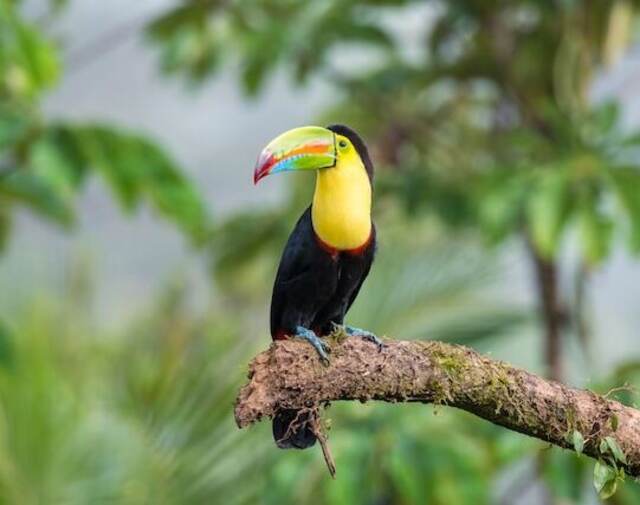
Top 10 Must-See Birds
The top 10 must-see birds in Costa Rica include the Resplendent Quetzal, Scarlet Macaw, Keel-billed Toucan, Fiery-throated Hummingbird, Montezuma Oropendola, White-throated Magpie-Jay, Snowcap Hummingbird, Yellow-throated Toucan, Three-wattled Bellbird, and Blue-crowned Motmot.
These birds are not only visually stunning but are also unique in their physical and behavioral characteristics.
Observing these species in their natural habitat provides a rare opportunity to appreciate the diversity of avian life in Costa Rica while deepening our understanding of the intricate relationships between species and their environment.
Resplendent Quetzal
The Resplendent Quetzal, with its vibrant green and red plumage, is a notable avian species that inhabits the Central American cloud forests, including those found in Costa Rica.
This bird species is highly revered in Mesoamerican cultures, where it was considered a symbol of freedom and divine power.
To better understand the Resplendent Quetzal, here are some interesting facts:
- The Resplendent Quetzal is known for its long, streaming tail feathers that can reach up to three feet in length.
- This bird species feeds on a diet that primarily consists of fruit, but also includes insects, small animals, and lizards.
- During breeding season, males will grow an additional set of long tail feathers that they use in elaborate courtship displays to attract a mate.
- The Resplendent Quetzal is also known for its unique nesting habits, where it will construct its nest in hollows of trees or other natural cavities.
As we explore the various bird species found in Costa Rica, the Resplendent Quetzal is just one of the many fascinating avian species that call this region home. Next, we will delve into the world of the Scarlet Macaw.
Scarlet Macaw
With its vibrant plumage and cultural significance, the Scarlet Macaw is a fascinating avian species that captivates both researchers and bird enthusiasts alike.
Found in the tropical regions of Central and South America, including Costa Rica, this bird species flaunts a bright red, yellow and blue plumage, making it highly recognizable.
In fact, this striking bird is known for its cultural significance, being a national bird in Honduras and Nicaragua.
Despite its beauty, the Scarlet Macaw is currently listed as a near-threatened species due to habitat loss and poaching.
Researchers have been studying the species in order to develop effective conservation measures.
In Costa Rica, the Scarlet Macaw can be found in the country’s tropical rainforests, where it plays a crucial role in seed dispersal and pollination. Costa Rica is the cherished dwelling place for more than 900 bird species.
With such a diverse range of bird species in this country, the Scarlet Macaw serves as just one example of the incredible avian diversity that can be found in Costa Rica.
Speaking of which, the next bird species we’ll explore is the keel-billed toucan.
Keel-billed Toucan
Amidst the lush greenery of Central and South America, the Keel-billed Toucan stands out with its vibrant colors and unmistakable beak, serving as a symbol of the region’s unique avian biodiversity.
In Costa Rica, where avian life thrives, the Keel-billed Toucan is a common sight in the forest canopy.
This species is known for its distinctive beak, which is both long and colorful, and serves multiple purposes such as gathering fruit, defense, and courtship.
Interestingly, despite its large size, the toucan’s beak is actually hollow and lightweight due to its unique structure.
This striking bird is also known for its vocalizations, which range from soft coos to loud croaks.
The Keel-billed Toucan is just one of the many species that contribute to the rich avian diversity of Costa Rica, making it a popular destination for birdwatching enthusiasts.
As we move on to explore the fiery-throated hummingbird, we will continue to discover the wonders of this unique ecosystem.
Fiery-throated Hummingbird
Prepare to be entranced by the resplendent beauty of the fiery-throated hummingbird, a marvel of nature found in the verdant forests of Central and South America.
With its iridescent green and blue plumage and vibrant red throat, this bird is a sight to behold.
The fiery-throated hummingbird is just one of the many wildlife species that make Costa Rica a birdwatching paradise, with over 900 species calling this country home.
As an endemic species, the fiery-throated hummingbird is found only in the high-altitude forests of Costa Rica and Panama, making it a special treat for bird enthusiasts who venture to these regions.
Its specialized beak and wings allow it to hover in place while it feeds on nectar from flowers, making it a fascinating subject for scientific study.
The study of endemic species such as the fiery-throated hummingbird is important for understanding the biodiversity of the region and for conservation efforts.
As we move on to the next section about the Montezuma oropendola, let us continue to marvel at the wonders of nature that Costa Rica has to offer.
Montezuma Oropendola
The Montezuma oropendola, characterized by its striking yellow tail feathers and distinctive pendulous nests, is a unique avian species that inhabits the lush forests of Central America.
This bird species is known for its loud and distinct calls that can be heard from far distances.
The Montezuma oropendola is a social bird that lives in large colonies and is often seen foraging for food, which mainly consists of insects and fruit.
The species is known for its elaborate nests that hang from the branches of trees and can sometimes be up to two meters long.
These nests are used for breeding and are made by the males who weave grasses and vines together to create the pendulous structure.
The Montezuma oropendola is just one of the many bird species that can be found in the diverse ecosystem of Costa Rica, showcasing the incredible variety of avian life in this region.
The next bird species to explore is the white-throated magpie-jay, a beautiful bird with a distinct appearance and unique behaviors.
White-throated Magpie-Jay
Moving on from the Montezuma Oropendola, another fascinating species of bird that can be found in Costa Rica is the White-throated Magpie-Jay.
This bird is known for its striking appearance, with a blue body and a white throat. It is a member of the crow family and is commonly found in the forests of Central America.
The White-throated Magpie-Jay is also known for its social behavior, as they are often found in groups of up to 20 individuals.
Their diet consists of fruits, insects, and small animals. In Costa Rica, the White-throated Magpie-Jay can be found in both the Pacific and Caribbean lowlands.
With its unique appearance and social behavior, this species is a must-see for any bird enthusiast visiting Costa Rica.
Moving on to the next species, let’s take a closer look at the Snowcap Hummingbird.
Snowcap Hummingbird
The Snowcap Hummingbird, with its shimmering green and purple plumage and speedy flight, is a remarkable avian species that inhabits the lush forests of Central America.
This tiny bird, measuring only about 3 inches in length, is a common sight for birdwatchers visiting the region.
Its habitat ranges from cloud forests to lowland rainforests, where it feeds on nectar from a variety of flowers and insects.
The Snowcap Hummingbird plays an important role in the local flora and fauna, as it helps pollinate the plants it feeds on.
Its distribution is limited to Central America, making it a sought-after species for birdwatching enthusiasts visiting the region.
Costa Rica, with its diverse ecosystems and birdwatching destinations, is one of the best places to spot this stunning hummingbird.
As we move on to the next section about the Yellow-throated Toucan, we can appreciate the unique and diverse avian species that call Central America their home.
Yellow-throated Toucan
Moving on from the Snowcap Hummingbird, another fascinating bird species that can be found in Costa Rica is the Yellow-throated Toucan.
This bird is known for its distinctive appearance, with a black body, white throat, and a bright yellow patch on its chest.
The Yellow-throated Toucan is a common sight in the rainforests of Costa Rica, where it can be seen perched on tree branches or flying through the canopy.
To give you a better idea of what this bird looks like and how it behaves, here are some bullet points:
- The Yellow-throated Toucan has a large, colorful bill that is used for feeding and communication.
- This bird is a frugivore, meaning it primarily eats fruit, but it will also consume insects and small animals.
- The Yellow-throated Toucan is a social bird that lives in groups of up to six individuals.
- During breeding season, the male and female will work together to excavate a nest in a tree cavity.
As you can see, the Yellow-throated Toucan is a fascinating bird species that is worth learning more about. However, it is just one of the many bird species that can be found in Costa Rica.
In fact, the country is home to over 900 different species of birds, making it a paradise for birdwatchers and nature enthusiasts. Speaking of which, the next bird species we will be discussing is the Three-wattled Bellbird.
Three-wattled Bellbird
The Three-wattled Bellbird, a bird species known for its distinctive three-wattled throat, serves as a metaphor for the unique and diverse wildlife that can be found in the lush rainforests of Costa Rica.
This bird species, also known as Procnias tricarunculatus, is a large bird that can grow up to 12 inches in length and has a wingspan of up to 20 inches.
The male bird has three long wattles that hang from its beak, which it uses to make loud calls that can be heard up to a mile away.
The female bird, on the other hand, has a shorter wattle that is not as prominent as that of the male bird.
The Three-wattled Bellbird is a native bird species of Central America and is found in the high-altitude cloud forests of Costa Rica.
This bird species is just one of the many unique and diverse bird species that can be found in Costa Rica, which is home to over 900 different species of birds.
The country’s diverse range of habitats, from mangrove swamps to cloud forests, provides a home for a wide range of bird species, making it a birdwatcher’s paradise.
The Three-wattled Bellbird is just one of the many fascinating bird species that can be observed in the lush rainforests of Costa Rica.
The blue-crowned motmot is another bird species that can be found in this region, and it is known for its distinctive blue crown.
Blue-crowned Motmot
The Blue-crowned Motmot, a bird species also found in the rainforests of Costa Rica, is characterized by its unique blue crown and serves as another example of the diverse and fascinating wildlife that inhabits this region.
These birds are known for their distinctive appearance, with bright blue feathers on their head and a long, racket-shaped tail.
They are insectivores, feeding on a variety of insects and small prey, and can often be seen perched motionless on a branch, waiting for their next meal to come along.
Despite being a common sight in Costa Rica, the Blue-crowned Motmot faces threats from habitat loss and degradation, as well as hunting and capture for the pet trade.
Efforts to conserve these birds and their habitats are vital to ensuring their survival in the region, and many organizations are working to protect these and other bird species in Costa Rica.
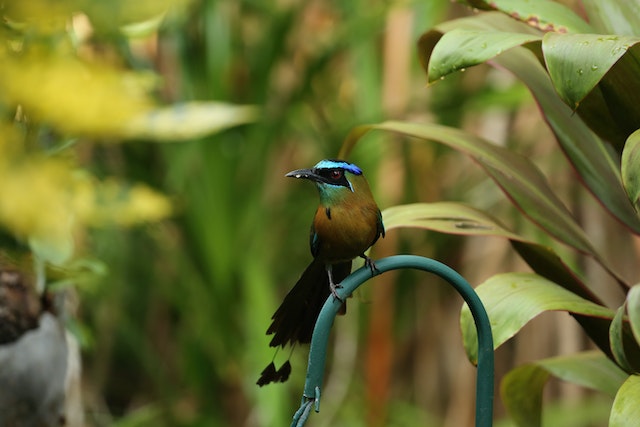
Conservation Efforts
The avian population in Costa Rica faces numerous threats that endanger their survival. These threats include habitat loss, fragmentation, and degradation, as well as pollution and disease.
However, there are ongoing efforts to protect Costa Rica’s avian biodiversity, including conservation programs, habitat restoration, and education initiatives.
Threats to Bird Populations in Costa Rica
The avian population in Costa Rica faces numerous challenges, including habitat loss, pollution, and climate change, which threaten their continued existence.
The destruction of ecological systems, such as deforestation, is the primary cause of habitat loss for birds in Costa Rica.
This results in a loss of nesting and feeding areas, which in turn leads to a decline in the bird population.
Additionally, pollution from pesticides and other chemicals also negatively impacts bird populations.
Many species of birds are endangered due to these threats, including the resplendent quetzal, the scarlet macaw, and the harpy eagle.
Climate change exacerbates these issues by altering migration patterns and disrupting breeding cycles. These threats must be addressed in order to protect Costa Rica’s rich avian biodiversity.
Efforts to protect Costa Rica’s avian bio are necessary to preserve the country’s natural heritage and ensure the future survival of these species.
Efforts to Protect Costa Rica’s Avian Bio
Costa Rica’s avian biodiversity is being conserved through a variety of measures, including habitat restoration, research, and education initiatives, all of which aim to promote sustainable coexistence between humans and the bird population.
Conservation efforts are crucial given that Costa Rica is home to over 900 different species of birds, many of which are endangered.
To protect these birds, organizations such as the Costa Rican Bird Observatories Network (CRBON) conduct research on avian populations and their habitats, while also engaging in habitat restoration efforts.
Additionally, the country’s government has implemented policies to protect endangered species and their habitats.
Conservation efforts have also had a positive impact on the country’s tourism industry, as birdwatching has become a popular activity in Costa Rica.
Local birdwatching guides have become key players in the conservation efforts, as they work to educate tourists and promote sustainable birdwatching practices that minimize disturbance to bird populations.
Overall, these efforts have helped to ensure that Costa Rica’s avian biodiversity remains intact for future generations to enjoy.
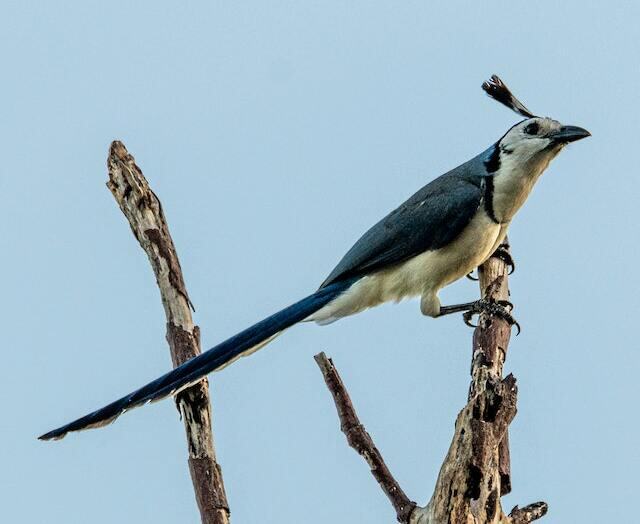
Frequently Asked Questions
What is the history of birdwatching in Costa Rica?
Costa Rica has a rich history of birdwatching that dates back to the 19th century. The country’s diverse habitats, including rainforests, cloud forests, and mangroves, make it an ideal location for birdwatching enthusiasts.
In the 1960s and 70s, birdwatching became increasingly popular in Costa Rica, and the country began to promote itself as a destination for birdwatching tourism.
Today, Costa Rica is known as one of the best birdwatching destinations in the world, with over 900 species of birds recorded in the country.
The country’s commitment to environmental conservation has played a significant role in protecting bird habitats and ensuring the continued growth of the birdwatching industry.
Despite the growing popularity of birdwatching tourism, Costa Rica remains focused on preserving its natural resources and promoting sustainable tourism practices.
How do climate and habitat changes affect bird populations in Costa Rica?
Climate and habitat changes can significantly impact bird populations in Costa Rica. As the climate changes, bird species may shift their ranges, alter their migration patterns, and change their breeding behaviors.
Similarly, habitat changes such as deforestation or development can fragment and reduce suitable habitats for birds, leading to declines in their populations.
For example, one study found that the loss of forested habitats in the Central Valley of Costa Rica led to a decline in bird richness and abundance.
Additionally, agricultural practices such as pesticide use can negatively impact bird populations by reducing their food sources and causing direct mortality.
It is crucial to understand the potential impacts of climate and habitat changes on bird populations to inform conservation efforts and protect the rich bird biodiversity of Costa Rica.
What is the economic impact of birdwatching tourism in Costa Rica?
Birdwatching tourism has become a significant source of revenue for Costa Rica, as it is considered one of the best birdwatching destinations in the world.
The country boasts a rich diversity of bird species, with over 900 species recorded, including many endemic species.
The economic impact of birdwatching tourism in Costa Rica has been significant, with estimates suggesting that it generates over $300 million annually.
This has led to the development of birdwatching infrastructure, such as birding lodges, tour companies, and birdwatching guides, which provide employment opportunities for local communities.
In addition, the conservation of bird habitats has become a priority for the government, as it recognizes the importance of maintaining the country’s biodiversity for future generations.
Overall, the economic impact of birdwatching tourism in Costa Rica is a testament to the country’s commitment to sustainable tourism and conservation efforts.
What are some lesser-known bird species found in Costa Rica?
While Costa Rica is well-known for its rich birdlife, there are several lesser-known bird species that are worth exploring.
For example, the black-crowned antpitta (Pittasoma michleri) is a small bird that is endemic to the Talamancan montane forests of southern Costa Rica.
Similarly, in the highlands of Costa Rica and western Panama, the yellow-billed cotinga (Carpodectes antoniae) gracefully roams as a rare and enigmatic bird, captivating those lucky enough to catch a glimpse of its presence.
Other lesser-known species include the Baird’s trogon (Trogon bairdii), the fiery-throated hummingbird (Panterpe insignis), and the collared redstart (Myioborus torquatus).
While these species may not be as well-known as some of the more common birds in Costa Rica, they are no less remarkable and are a testament to the country’s incredible biodiversity.
How do local communities in Costa Rica participate in bird conservation efforts?
Local communities in Costa Rica play a vital role in bird conservation efforts. These communities recognize the importance of bird populations in maintaining the ecological balance of their region and actively participate in conservation efforts.
They engage in various activities such as monitoring bird populations, protecting bird habitats, and educating others about the importance of bird conservation.
Through these efforts, local communities contribute to the preservation of biodiversity and the protection of endangered bird species.
Their involvement in conservation efforts is crucial in ensuring a sustainable future for both birds and humans.
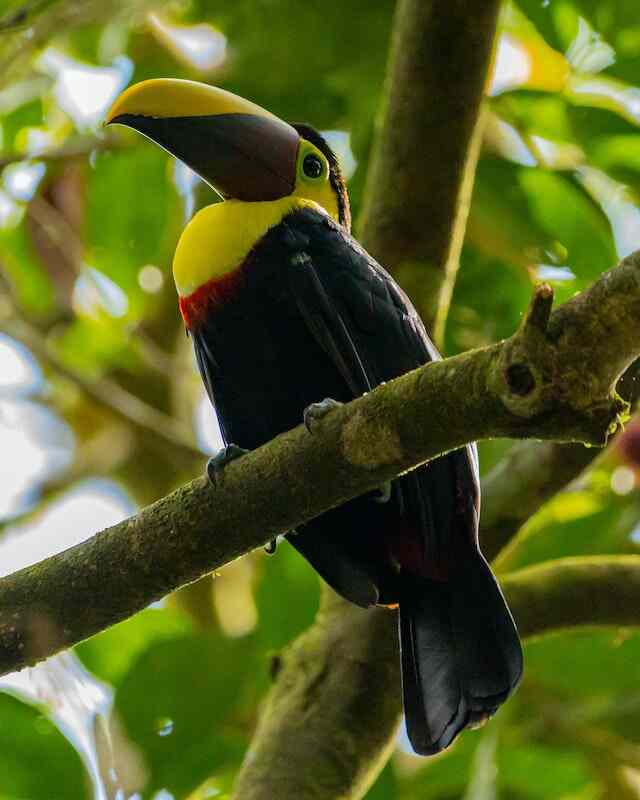
Conclusion
In conclusion, Costa Rica harbors a diverse range of bird species, making it a popular destination for birdwatchers and naturalists alike.
With over 900 different species recorded, the country’s tropical forests, wetlands, and coastal habitats provide a rich and varied habitat for these feathered creatures.
Despite the challenges of habitat loss and climate change, Costa Rica has made significant strides in protecting its avian biodiversity through conservation efforts.
However, continued vigilance is necessary to ensure the preservation of these important ecosystems and the countless species that depend on them.
Like a symphony of fluttering wings, the bird life in Costa Rica is a marvel to behold. With each unique species adding its own distinct note to the natural chorus, it is a reminder of the beauty and complexity of our world.
As we work to protect these delicate ecosystems, we must remember the importance of preserving these precious treasures for generations to come.

